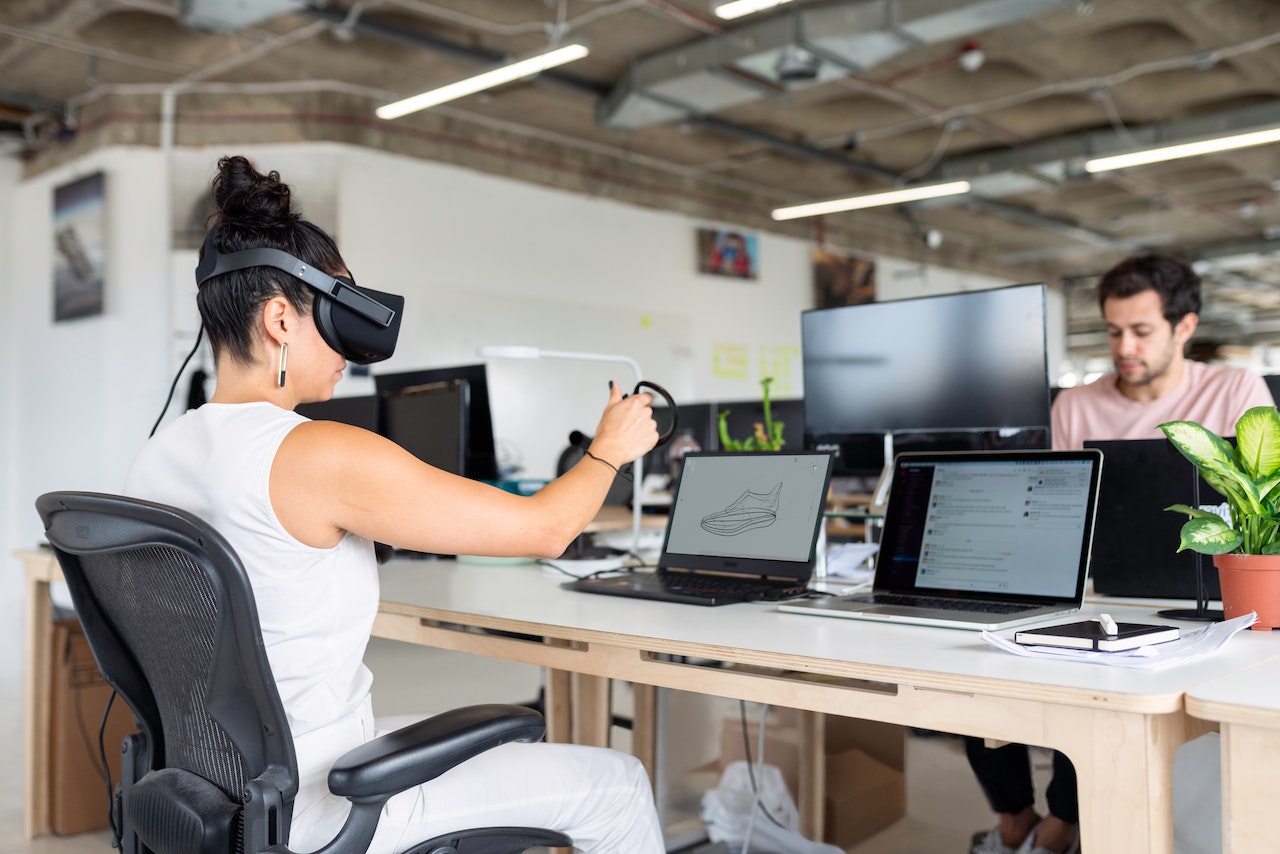Everything you need to know about virtual reality for product visualization
Introduction
You may have heard a lot about virtual reality (VR) in the past year or so. It’s been making waves in the entertainment industry, but there is a lot more to VR than just gaming and movies. In fact, VR can be an extremely powerful tool for product manufacturers.
In this article, we’ll discuss what VR is, how it works, and how you can use it for product visualization. We’ll also take a look at some of the most popular VR headsets and simulated environments on the market. By the end of this article, you’ll know everything you need to know about VR for product visualization.
What Is Virtual Reality?
Virtual Reality is a technology that uses computer-generated imagery to create a simulated environment. VR headsets are head-mounted wearables that track info generated by human senses- Sight, Sound, Touch, and Movement. In order for VR to be believable and interactive, it needs to engage both the body and mind.
The Different Types of Virtual Reality Headsets Available
There are three main types of virtual reality headsets available: tethered, standalone, and smartphone-based. Each type has its own benefits and drawbacks.
Tethered headsets are those that are connected to a PC or desktop. They offer the best graphics and the most immersive experience, but they can also be expensive and require a lot of setups.
Standalone headsets are those that do not need to be connected to any other device in order to work. They usually have limited graphics, but they are more portable and user-friendly than tethered headsets.
Smartphone-based headsets are the cheapest and most portable option, but they offer the least immersive experience. They rely on the processing power of the smartphone they are attached to, so graphics may not be as good as with other types of headsets.
Oculus Meta Quest 2 – The Latest VR Headset for Product Visualization
The Oculus Meta Quest 2 is the latest virtual reality headset that has been gaining momentum in the product visualization realm. It is an impressive device that allows you to immerse yourself in immersive simulated environments. It also has built-in 3D audio and haptic feedback, giving you a more realistic experience.
There are some differences between the Meta Quest Pro and the Quest 2 though. The Meta Quest Pro is the most advanced VR headset available for product visualization and it runs on Windows 10 operating system. On the other hand, the Meta Quest 2 has been designed with a focus on mobility and portability, and it runs on Android OS.
The Oculus Quest devices are great for product visualization because they provide a fully immersive experience with realistic visuals and detailed audio. Additionally, they use advanced tracking technology to make sure that you always know where you’re looking in any given simulated environment, making them ideal for product design workflows.
Benefits of Using Virtual Reality for Product Visualization
What’s the benefit of using virtual reality for product visualization?
For starters, there’s the tracking component of VR headsets. This means that they are able to track and monitor movements like turning your head around which allows you to explore parts of the simulated environment.
Then there’s augmented reality (AR). AR overlays artificial objects into your real-world environment, so you can interact with them. For example, you can use an AR headset to see a prototype product in its full size, or you could use it to take a look at design features from different angles.
Virtual reality is also great for education and training. You can use it to help ensure accuracy when displaying products and their features in a virtual space. It also makes it easier to spot minor flaws or design issues with prototypes before they go into production. Finally, it can be used as a powerful marketing tool for companies looking to showcase their product in a virtual space.
How to Create a Simulated Environments for Product Visualization?
Creating a simulated environment for product visualization can be a fairly simple process if you choose the right 3d visualization company.
Servex creates custom-created virtual reality applications to place a product in any environment while adding any desired interactions to improve product visualization.
First, you’ll need to find or create the 3D models of the products you want to use in your VR simulation. Once you have those models, you’ll need to create the virtual environment in which they will be placed. This can be anything from a room in a house to an outdoor landscape.
With the environment created, you can then begin to add the finishing touches. Use the computer software to add lighting, shadows, and other special effects. You can also add sounds and music for a more immersive experience.
You’ll need a VR headset, some computer software, and a bit of imagination.
When you’re done, put on the VR headset and enter your virtual world.
Conclusion
So, there you have it. You now know everything you need to start creating product visualizations in virtual reality. You know about the different headsets and software that are available, and you know how to create simulated environments for your products.
This is a great time to be in the virtual reality industry, and with the technology becoming more and more accessible, the possibilities are endless. So, what are you waiting for? Start creating some amazing product visualizations today! Contact us to learn more.


